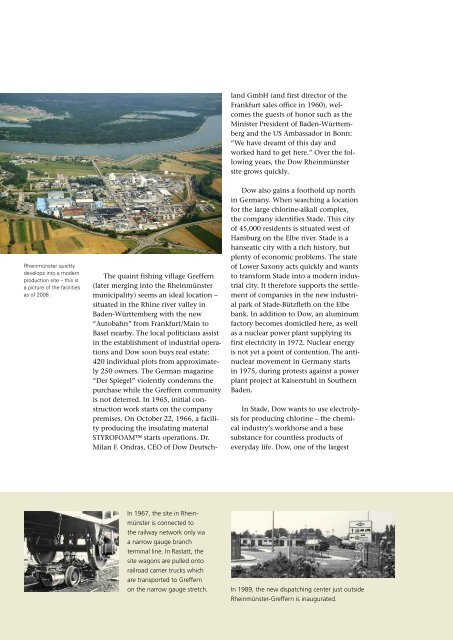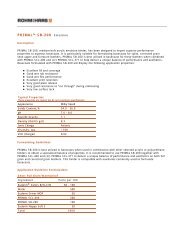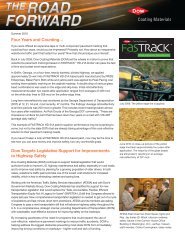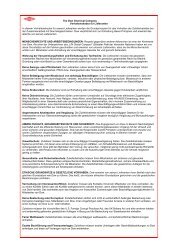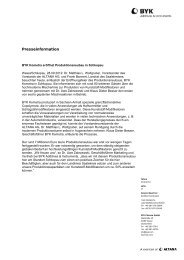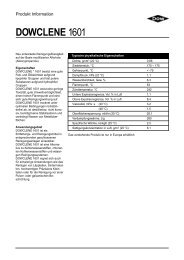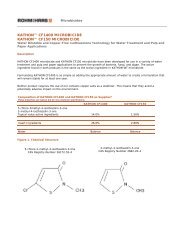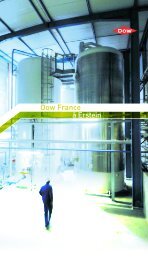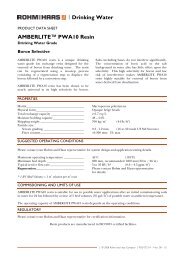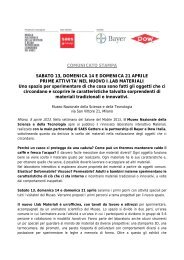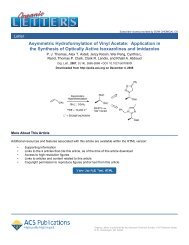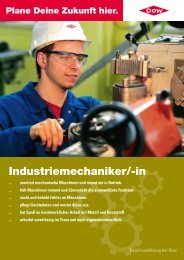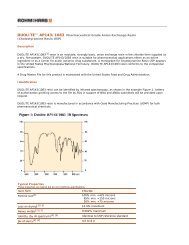In the Heart of Europe - The Dow Chemical Company
In the Heart of Europe - The Dow Chemical Company
In the Heart of Europe - The Dow Chemical Company
You also want an ePaper? Increase the reach of your titles
YUMPU automatically turns print PDFs into web optimized ePapers that Google loves.
Rheinmünster quickly<br />
develops into a modern<br />
production site – this is<br />
a picture <strong>of</strong> <strong>the</strong> facilities<br />
as <strong>of</strong> 2006.<br />
<strong>The</strong> quaint fishing village Greffern<br />
(later merging into <strong>the</strong> Rheinmünster<br />
municipality) seems an ideal location –<br />
situated in <strong>the</strong> Rhine river valley in<br />
Baden-Württemberg with <strong>the</strong> new<br />
“Autobahn” from Frankfurt/Main to<br />
Basel nearby. <strong>The</strong> local politicians assist<br />
in <strong>the</strong> establishment <strong>of</strong> industrial operations<br />
and <strong>Dow</strong> soon buys real estate:<br />
420 individual plots from approximately<br />
250 owners. <strong>The</strong> German magazine<br />
“Der Spiegel” violently condemns <strong>the</strong><br />
purchase while <strong>the</strong> Greffern community<br />
is not deterred. <strong>In</strong> 1965, initial construction<br />
work starts on <strong>the</strong> company<br />
premises. On October 22, 1966, a facility<br />
producing <strong>the</strong> insulating material<br />
STYROFOAM starts operations. Dr.<br />
Milan F. Ondras, CEO <strong>of</strong> <strong>Dow</strong> Deutsch-<br />
land GmbH (and first director <strong>of</strong> <strong>the</strong><br />
Frankfurt sales <strong>of</strong>fice in 1960), welcomes<br />
<strong>the</strong> guests <strong>of</strong> honor such as <strong>the</strong><br />
Minister President <strong>of</strong> Baden-Württemberg<br />
and <strong>the</strong> US Ambassador in Bonn:<br />
“We have dreamt <strong>of</strong> this day and<br />
worked hard to get here.” Over <strong>the</strong> following<br />
years, <strong>the</strong> <strong>Dow</strong> Rheinmünster<br />
site grows quickly.<br />
<strong>Dow</strong> also gains a foothold up north<br />
in Germany. When searching a location<br />
for <strong>the</strong> large chlorine-alkali complex,<br />
<strong>the</strong> company identifies Stade. This city<br />
<strong>of</strong> 45,000 residents is situated west <strong>of</strong><br />
Hamburg on <strong>the</strong> Elbe river. Stade is a<br />
hanseatic city with a rich history, but<br />
plenty <strong>of</strong> economic problems. <strong>The</strong> state<br />
<strong>of</strong> Lower Saxony acts quickly and wants<br />
to transform Stade into a modern industrial<br />
city. It <strong>the</strong>refore supports <strong>the</strong> settlement<br />
<strong>of</strong> companies in <strong>the</strong> new industrial<br />
park <strong>of</strong> Stade-Bützfleth on <strong>the</strong> Elbe<br />
bank. <strong>In</strong> addition to <strong>Dow</strong>, an aluminum<br />
factory becomes domiciled here, as well<br />
as a nuclear power plant supplying its<br />
first electricity in 1972. Nuclear energy<br />
is not yet a point <strong>of</strong> contention. <strong>The</strong> antinuclear<br />
movement in Germany starts<br />
in 1975, during protests against a power<br />
plant project at Kaiserstuhl in Sou<strong>the</strong>rn<br />
Baden.<br />
<strong>In</strong> Stade, <strong>Dow</strong> wants to use electrolysis<br />
for producing chlorine – <strong>the</strong> chemical<br />
industry’s workhorse and a base<br />
substance for countless products <strong>of</strong><br />
everyday life. <strong>Dow</strong>, one <strong>of</strong> <strong>the</strong> largest<br />
<strong>In</strong> 1967, <strong>the</strong> site in Rheinmünster<br />
is connected to<br />
<strong>the</strong> railway network only via<br />
a narrow gauge branch<br />
terminal line. <strong>In</strong> Rastatt, <strong>the</strong><br />
site wagons are pulled onto<br />
railroad carrier trucks which<br />
are transported to Greffern<br />
on <strong>the</strong> narrow gauge stretch. <strong>In</strong> 1989, <strong>the</strong> new dispatching center just outside<br />
Rheinmünster-Greffern is inaugurated.


